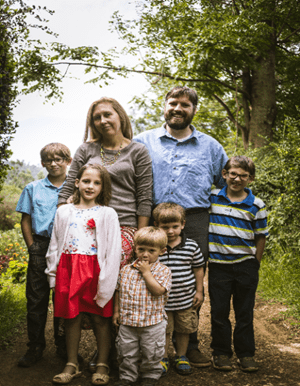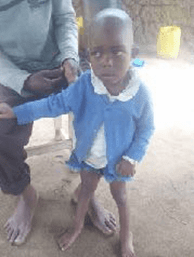In 2018, the World Forgotten Children Foundation (WFCF) funded US$ 5,731 to the The Imani Project in Kenya. The funds went toward the purchase of custom wheelchairs and other apparatus for children with severe cognitive and physical disabilities living in the remote coastal villages of Kenya.
After looking far and wide for Nairobi wheelchair makers, the Imani Project recruited an occupational therapist named Luke McAuley who is known for his superior knowledge in pediatric customizable wheelchairs.
McAuley is an expert when it comes to ensuring that the devices meet the children’s specific needs. Recently, WFCF had the pleasure of interviewing the occupational therapist about his experiences helping these children in the rural parts of Kenya.

What is your full name?
My name is Luke McAuley, OTR/L, ATP
What is your occupation?
I am an occupational therapist that is a missionary working under two organizations. We are sent out by SIM and seconded to BethanyKids here in Kenya.
How many years have you been doing this occupation?
I have been an occupational therapist for 10 years, and I have specialties in pediatrics, assistive technology and wound care.
How did you become involved with the Imani Project?
As an organization we are working on creating a national assistive technology program (which primarily focuses on wheelchair provision at this time) to meet the extensive need within the country of Kenya. As a result, folks from the Imani project saw that we were providing wheelchairs and contacted us to help them provide wheelchairs to families with children in particular need.
What was your position/role with the Imani Project?
My role with the Imani project was to assess the children, provide appropriate seating and fittings for the children, train the families on use of the wheelchairs and provide a basic rehabilitation assessment and advise/home exercise program. We, BethanyKids, will also do follow ups and make sure that the wheelchairs are functioning appropriately.
How does it feel to provide children with customizable pediatric wheelchairs that support their mobility?
It is a great feeling for me to be able to provide someone with an appropriately fitting mobility devise as it not only provides them with the potential to explore their environment more, prevent injury and treat deformities, but it also allows me to have an impact in providing dignity to whom they are as individuals. It also brings light to the needs and blessing that children with special needs can be to the community. It is especially special when a child who has been confined to the floor on the inside of a hut all of a sudden has this great huge smile because he or she is now on the same level and same orientation as all of their peers (it opens up a whole new world)!

For one of the children named Phillip Kazungu from the village of Masheheni, you suggested that a wheelchair was not needed, but that the 3-year-old boy would be better with sandals and arch supports. How do you decide whether a child will need a wheelchair or not?
The decision to provide a wheelchair is dependent on the skills, muscle control and prognosis of their condition. In his case, when I saw him he simply had a developmental delay with normal tone and some limited structural issues with the arch of his foot and was able to walk with one hand held and took multiple steps on his own. So, with his current skills he showed great potential just to walk with minimal home exercises (which were shown to the mom). I'm looking forward to following up with him and seeing how fast he is walking and running now.
What supplies do you use to build the mobile wheelchairs and where do you get these supplies from?
We work with several different organizations to obtain different types of wheelchairs for different needs (we use WHO standards in our process for deciding what a child needs, assessing, fitting, and follow up). We then utilize parts from other wheelchairs, local resources like wood, foam and cloth materials to create custom sizing and supports as needed.
What difficulties did you have to overcome while working with The Imani Project and/or while you were creating customized wheelchairs for these children?
The only difficulties we had are what we always experience; and that is having enough time to complete the projects and having the ability to get as close to the families as necessary (terrain and distance is always an issue).
What was the most memorable experience you had while helping a child receive a wheelchair?
That is hard to pick as I personally have provided hundreds of wheelchairs here in Kenya over the last several years, and our team has provided several hundred more. The stories that always stick out to me are the ones of teenagers that are too big for their families to carry on their backs and as a result, get locked in the house for entire days and often never get to go outside, however when they receive a wheelchair they are SO happy to simply be able to go outside and enjoy the sunshine! There was a 16-year-old girl that I gave a wheelchair to several months ago and her mother told me, “Now I can finally take her with me into the community and they can see her great smile!”
To catch up on Luke McAuley’s work with The Imani Project, please visit: https://www.worldforgottenchildren.org/blog/importance-of-wheelchairs-in-developing-countries/66.

